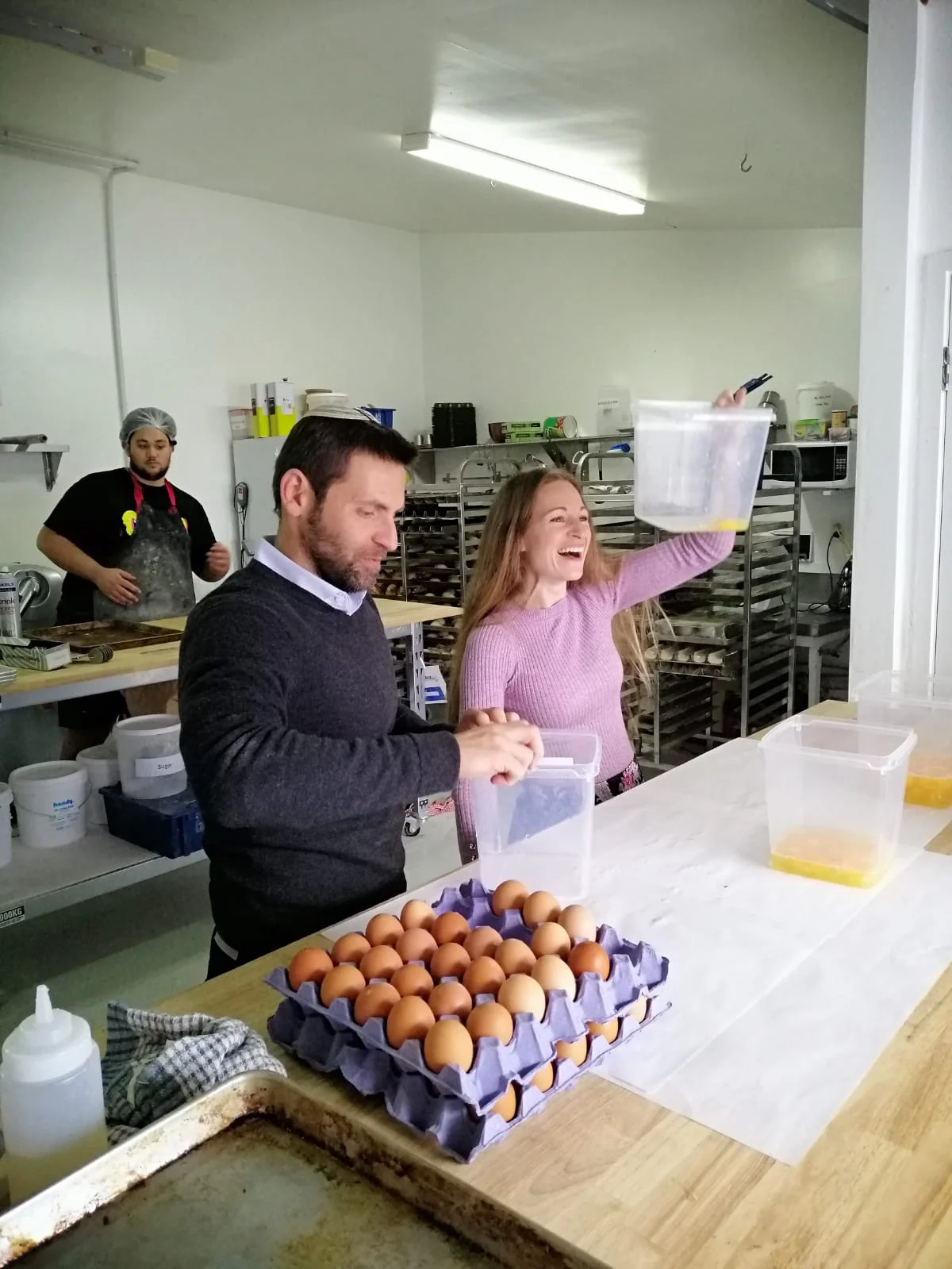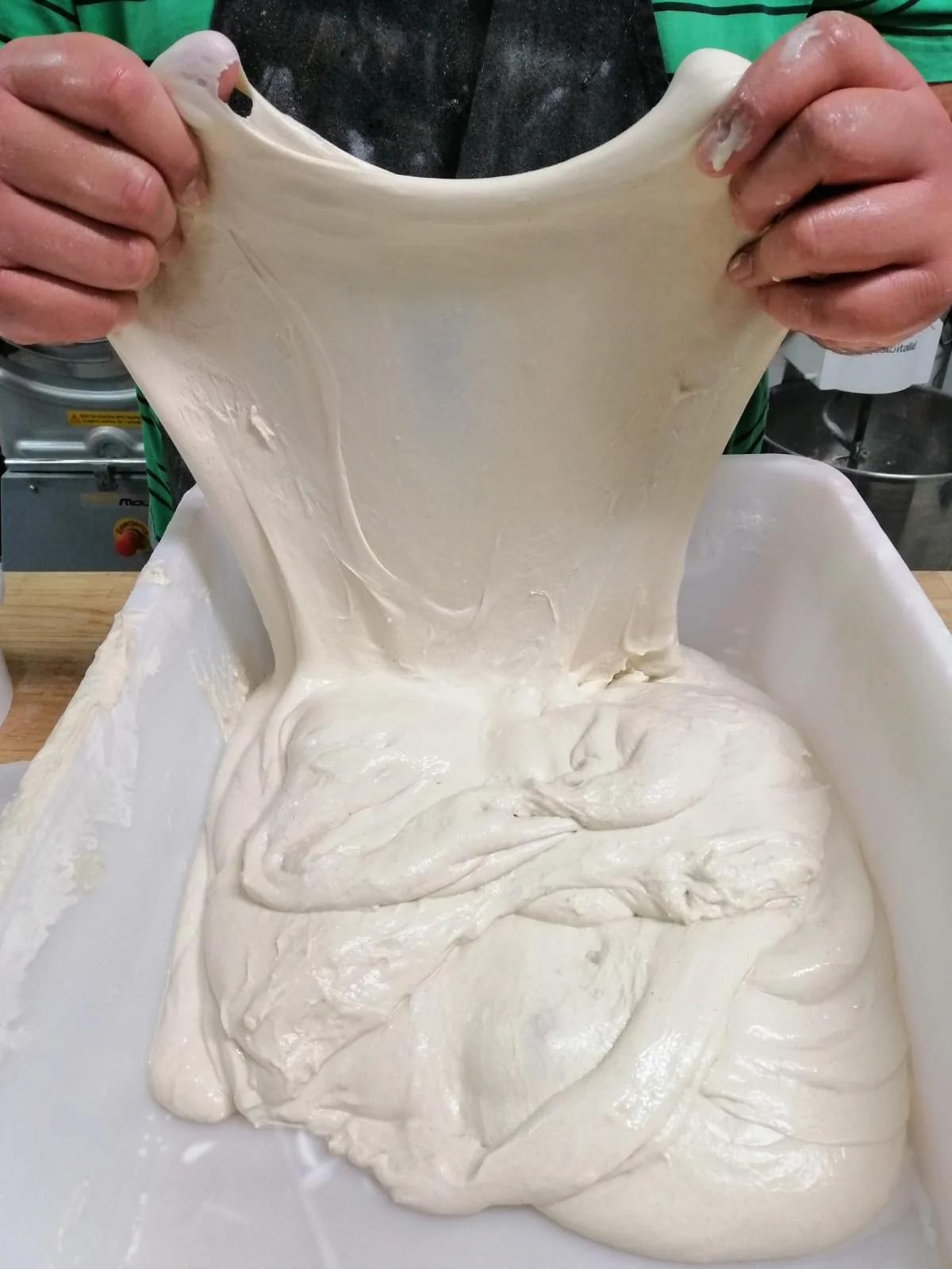When yeast feeds on the sugars in the flour, it starts to emit carbon dioxide gas, which creates the bubbles in bread (and determines the crumb of the baked product).
The wild yeasts bakers talk about are ‘wild’ because they are in the air of the bakery and present on the grain. Commercial yeast, by contrast, is a single strain of yeast which was isolated because it proved to be a particularly excellent rising agent. There is no yeast diversity when commercial yeast is used without any fermentation process and the flavour that results has considerably less depth.
The work of yeast
In his book, Wild Fermentation, Sandor Ellix Katz explains how yeast is used to make bread and how its isolation in the 19th-century gave us a totally different type of bread… I know the logic of quoting and all that, but why try to re-word something so clearly written??? He writes:
“We generally think about the fermentation of bread primarily in terms of yeast, used in bread-making to make dough rise. In our time, yeast is available in every grocery store as an isolated microorganism, a fungus called Saccharomyces cerevisiae….
The same yeast that makes most beer makes most bread. [Bread and beer] are made from grains, just with different processes. In both, the yeast does the same thing: It consumes carbohydrates and transforms them into alcohol and carbon dioxide. In bread, the carbon dioxide is the more important product. Its bubbles are what rise the bread, giving it texture and lightness. The alcohol evaporates as the bread is cooked.
Though yeast as a particular type of organism was not isolated until the mid-19th century, the word yeast is ancient and comes from the Greek zestos, meaning “boil”…. Prior to the science of microbiology, yeast referred to the visible action of fermentation, the rising of a dough, or the frothing of a batter or a beer, and to the various clever methods that people developed to perpetuate that bubbling transformative power. Yeast is the lifting action, the bubbles, the leavening. Until Louis Pasteur isolated a particular fungus and named it yeast, neither yeast nor any microorganism ever existed in isolation. French historian Bruno Latour, in his book The Pasteurization of France, observes of Pasteur’s isolation of pure microbial strains: “For the first time - for them as well as for us - they were to form homogenous aggregates… which none of their ancestors ever knew.”
The yeasts you find in nature are never pure. They travel in motley company. They are always found with other microorganisms. They embody biodiversity. They have distinctive flavors. And they are everywhere. All earlier “yeast” consisted of biodiverse microbial communities including the type of fungus we know as yeast but also lactic acid bacteria and others. Such biodiverse microbial communities exist in abundance on our grains, as well as in (non-chlorinated) water and air, always ready to stop and feast.
In bread-making, the perceived advantage of working with pure yeast is that the huge concentration of yeast works fast and that makes the process of making bread easier and more predictable. Natural leavening with wild fermentation is slower. The bacteria in the mixed culture get a chance to break down the hard-to-digest gluten, liberate minerals, and add B vitamins. The lactic acid and other metabolic by-products of fermenting organisms contribute complex sour flavors and enable the bread to keep longer. With pure yeast breads, nutrition, digestibility, flavor, and preservation potential are sacrificed for speed and ease.
Prior to the widespread availability of commercial yeast, people used any one of a number of methods to propagate their yeasts. Most often bread makers reserve a bit of their yeasty batter or dough as a “starter”. A starter can be maintained for a lifetime and passed on for generations. It often accompanied immigrants (dried on a cloth) on their journey to new unknown lands. Starter is mostly referred to nowadays as sourdough or natural leaven.”
italics in original pp.156-157, Sandor Ellix Katz (c2016) Wild Fermentation: The flavor, nutrition, and craft of live-culture foods. Updated and Revised Edition. Chelsea Green Publishing, White River Junction, VT https://www.wildfermentation.com/
Sourdough: the ultimate in ‘eat local’ and ‘eat Slow’
At its most basic, a starter is just flour and water left out to ferment. As with anything, what you feed your starter and how well you care for it determines how healthy and effective it is. Dusty’s starter is called Obi (see my earlier post on Obi) and Obi does the lion’s share of yeast work at The Dusty Apron. Hopefully, having read Katz’s explanation, you can now see behind the scenes and understand better what exactly Obi’s doing all day long.
An interesting point about starters; Figuring out their age is basically impossible:
On the one hand, Obi is reborn each day; as he’s fed and the wild yeasts gather round to feast, a new Obi is created, depending on where and what he’s fed. On the other hand, Obi’s been living this way for 20+ years…
Some people talk about using starters that come from San Fransisco, but what makes San Fransisco sourdough so amazing is the climate, the fog and the actual yeasts and bacteria that live there (as well as the good bakers, of course). So, unless you’re actually feeding your starter in San Fransisco every day (and letting the San Fransiscan yeasts and bacteria do the work), it is no longer a San Fransisco sourdough. It’s a sourdough from wherever you are. It’s completely your own and the ultimate in ‘eat local’ (not to mention ‘eat Slow’). Pretty cool really.







